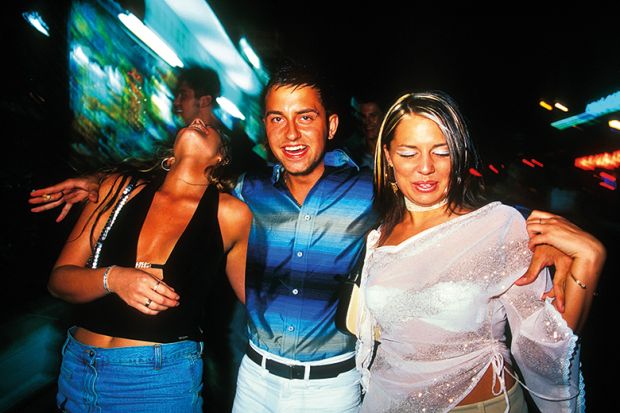There is no limit to the talents of some academics. In her new book, Hormonal: How Hormones Drive Desire, Shape Relationships, and Make Us Wise (Oneworld), Martie Haselton cites the case of “a very prominent, infamously uninhibited evolutionary biologist” who claimed in a Q&A session after a talk she gave that he could definitely detect during oral sex if his partner was ovulating.
Haselton directs the Evolutionary Psychology Laboratory at the University of California, Los Angeles, and her book, as the title might suggest, explores the ways that behaviour is still moulded by our evolutionary past. I have long been intrigued by the research that seems to indicate that young guys out on the pull on a Saturday night, for whom the joys of fatherhood are the very last thing on their minds, nonetheless disproportionately hit on girls at the most fertile phase of the menstrual cycle. I love the argument that killer whales, virtually the only other species that experiences menopause, do so because it allows the grandmothers to help out with the childcare unburdened by children of their own. But I am fairly sceptical of books about sperm wars and similar topics that argue that we men are in some sense programmed to spread our seed as far and wide as possible, because they seem to give a very partial account of my own life and that of most of the men I know (I’m just as happy to stay in and play chess).
Given that Haselton’s book is almost entirely about women, I am naturally agnostic regarding its factual claims about how hormones influence – though obviously do not control – eating, exercise, dress, flirtatiousness, perceptions of the relative attractiveness of different partners and even attitudes towards other women. Much of this is based on detailed research, but Haselton wants to argue that the adjective “hormonal” should be a badge of pride rather than an insult, that women are directed in “the mate-search effort” in what she calls “a hormonally intelligent way” and indeed can tap into “a uniquely female power”. She is also aware, of course, of the intense irritation and hostility that this kind of argument can arouse.
But as with many books that take an evolutionary approach to current behaviour, it is hard to know whether the author is projecting forward or projecting back. Critics of earlier popular works of evolutionary psychology have sometimes claimed that their authors seem to imagine the prehistoric past as being a bit like The Flintstones. For Haselton, ancestral women were caught in precisely Bridget Jones’ dilemma, torn between the Sexy Cad and the Good Dad. She writes in a style that is lively, popular and confessional, but still scrupulous in its analysis of what her research does and does not show – a bit like chick lit with footnotes. How effective and appropriate is this as a model for popularising certain kinds of academic work?
